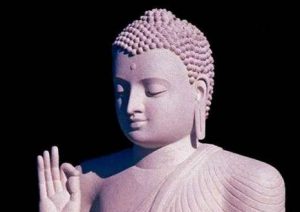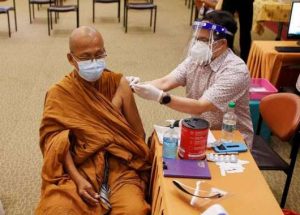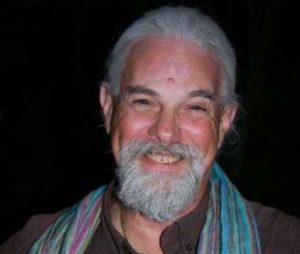
Imagine, if you will, a trip to the doctor. Some malady, some nondescript pain causing worry and anxiety. You expect some tests, some examination, some “case history.” But instead, the doctor proclaims: “OK, we give all our patients this here medicine for a week, then this one for a month. Oh, and then this one for three more months. And call me then for a renewal.” If you are a dutiful, compliant, and trusting individual, you might even go along with it. But possibly one may question the absolutely generic nature of this exchange. No diagnosis, no distinction between what kind(s) of illness you may have, your age, your background, your current or past health, and on and on. OK, it would be absurd. And the results would be, at least 90 per cent of the time, quite questionable. Now it is true, everybody can benefit from vitamin C (almost everybody). There are basic life requirements such as fresh air, sunshine, exercise, friends, and so on. We need a generic roof over our heads and generic clothes on our back. But the more advanced our requirements, the more expertise we need. That means the more specialization we must have—individualization. I admit that I am prejudiced, having practiced as a holistic doctor and homeopath for more than 40 years. That advanced form of medicine is the epitome of personalized assessment and treatment. We have at least 500 different remedies for a headache. Even if the illness has the same name (arthritis, asthma, depression, anxiety, gastritis, and so on) there are dozens of options. Indeed, the deeper one wishes to go, or can go, the more granular the determination becomes.
True, medically you can get a CT scan, biochemical tests, physical exams, and a seasoned and experienced doctor. Nutritionally, a full DNA analysis of one’s intrinsic biochemical needs, a detox panel, and testing of the microbiome gives us a definitive pack of data to start prescribing nutritional supplements and dietary changes. But for the “soft science” of psychology, things get trickier. While there are no end of surveys, types of tests, a listening ear, and systems of psychotherapy to go along with them, it seems that there are more neuroses, borderline conditions, and outright sociopathy than ever before in history. But at least there is some kind of framework—actually over 500 of them. No unified theory of the mind, but in the right hands (as difficult as finding a good dentist), people can be helped. Here, let’s skip over the tangled skein of self-help, self-styled gurus, and everything that pours forth out of the internet in a never-ending stream, like a bad LSD trip.
When it comes to the complexity called Buddhism, we have layers and levels, an enigma wrapped in a mystery. This is where the well-documented concepts of exoteric, mesoteric, and esoteric come in. There are superficial or generic practices that everyone can do, and should do, to engage with the Buddhist (or any other spiritual) path. Skill in basic sitting practice, mantras, visualization, all the marvellous menagerie of ideas and understandings about karma, the nature of self, of mind, of life. This is just your basic learning curve, like delving into any new language, any science, any art. What could go wrong? It is fine, until at some point we have to go deeper. Then it’s still not necessarily wrong, but it is no longer right.
But maybe nobody tells us that. We did receive the profound empowerment of the secret deity, the transmission that flows direct from the most elevated spheres, from the Wisdom Mind itself (which also happened to take place over Zoom). The purity and beauty of this brilliant spiritual path shines forth. And that is a problem. We may bask in that glow and not realize that it is not yet within us. What we need now, once we have had our months, years, or decades of effort, is a proper diagnosis. The generic stuff will not do. And what test, what enquiry, what assessment will tell us exactly what is needed at this moment, and tomorrow, and next week? Of course, if we have been in the game long enough, we can self-diagnose, self-assess. But as the saying goes, “the doctor who treats himself has a fool for a patient.”
A stumbling block, by definition, is the one we are tripping over. We simply can’t see it. Otherwise it is not the actual stumbling block! We can see 50 other prominent rocks and tree stumps, but we will mostly fail to see that slim razor’s edge. Thus arises the strange human situation of another seeing us better than we can see ourselves. And thus is also born the profession of coaching, counseling, and revealing conversations. Yet if we are clever enough, self-introspective enough, and fortunate enough to get the message, the real message as far as what is needed, then what? Do we know the treatment? That is equally (or even more) difficult to ascertain. The problem may be something we have never encountered before and know nothing about. And so, potentially, is the solution. It would seem that the only real solution is the same one that has been applied since the beginning of this extraordinary development called human transformation: an accurate spiritual diagnosis and an appropriate spiritual treatment. And now, the real sticking point: how and when will this precise advice arise, and from whom is it coming?
Now we can imagine ourselves out of that doctor’s office, that generic doctor with the generic pills for some imaginary generic patient who is the same as every other patient. Then we enter the open-sesame door of the spiritual specialist, the esoteric master. He or she can tell you exactly where the blockages are in your energy body, and quickly. Which channel, which organ, which flow system. They can know which of the five elements are involved, and what kind of distortion is there: too much, too little, displaced, toxic, tangled, stagnant, absent. And it is pretty clear what emotion, what misconceptions, what traumas might be involved; its texture and tone, maybe its sounds and semantics. The narratives, the identities that surround such blocks are also evident, an information-energy grid of mathematical precision. It seems that this particular diverted flow is stopping spiritual progress, blocking the entry of higher energies, causing disturbed emotions, physical illness, preventing opening into luminous stillness. Or creating illusions and fixations that conflict with relative reality. There might be resistance, there might be foreign energies, demonic inputs, past lives. Good Lord, it is an endless chain of potential screw-ups and spanners in the works.
The prospects for treatment, and for cure, also seem limitless. It might be super simple; a posture, a sound, or even a slight shift in understanding, maybe a color, a few degrees change in direction, a holiday. It is wide open, not pre-planned, and only limited by the sensitivity and knowledge of the master spiritual guide. In the Buddhist realm, much of the work has to be done by the “patient,” by you. But with an all-important a push in the right direction, an impetus, new knowledge about where we are in our own map, or in the larger territory. Or they may need to make a larger incision, or extract an abscess from the soul. Just like going to the acupuncturist, the chiropractor, or the surgeon, afterward you will be on your own again, and you have to follow the wise advice and inner and work in the arena of body and mind. So where are these psycho-spiritual laser-wielders of Vajrayana Buddhism?
Back to why the Dharma fails. My own experience over four decades tells me that such a level of sensitivity and “ngön shay” or psychic knowing is rare. It requires a certain kind of inner mastery and skill. But it also requires a context in which that is exactly what a lama, ngakpa, ngakma, a spiritual guide, does. Right now, and as far as I can remember, it is not par for the course, and has not been a routine nor expected part of the process. Whether more advanced disciples (i.e. know the basics) or even on a fundamental level, it has to be specific, personal, individualized. Should everybody do the same preliminaries, and the same mantras and deities? If so, for how long? In a best-case scenario, same-same is only the testing ground. It is only digging in to see if there is the heart or guts to keep going when the going gets rough. We are all so very unique. The further we go, the more the solutions must be tailored to that uniqueness. If you find someone who has the skill and intelligence to hone in and tell you what is what, what is needed, then hold fast, hold tight. And if they understand that this is their job, what they chose to do, to help that specific utterly unique person in front of them, hold doubly fast. In the wide world of the Dharma, this is as rare as daytime stars.
Asa Hershoff
San Diego
March 2023
See more
Related features from BDG
Up and Down the Spiritual Ladder
Purifying Samsara’s Grand Mess
Now or Never












